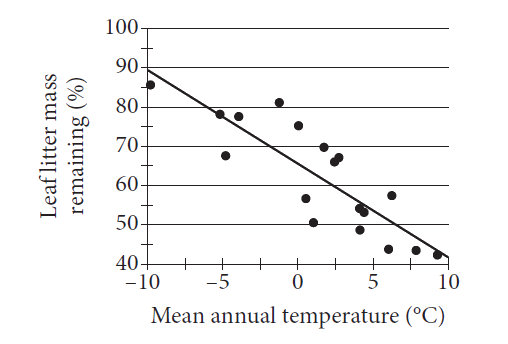is there any relationship between dedifferention and the higher degree of success achieved in plant tissure experiments ?
Step-by-Step Solution:
1. Understanding Dedifferentiation: Dedifferentiation is the process by which specialized cells lose their specific characteristics and revert to a more primitive, unspecialized state. This is crucial in plant tissue culture as it allows cells to regain the ability to divide and form new tissues.
2. Embryonic Stage Reversion: When cells dedifferentiate, they regress back to an embryonic-like stage. This stage is characterized by the potential to develop into various types of tissues, which is essential for successful plant regeneration.
3. Differentiation into Various Tissues: After dedifferentiation, these cells can then differentiate again into various types of tissues. This ability to form multiple tissue types is vital for the success of plant tissue experiments, as it allows for the creation of whole plants from a single cell or tissue sample.
4. Higher Success Rate in Plant Tissue Experiments: The relationship between dedifferentiation and the success of plant tissue experiments is significant. When cells can revert to a more versatile state, the likelihood of successfully producing viable plant tissues increases. This versatility leads to a higher degree of success in regenerating plants from tissue cultures.
5. Conclusion: Therefore, there is a clear relationship between dedifferentiation and the higher degree of success achieved in plant tissue experiments. The ability of cells to revert to a more undifferentiated state enhances their potential to form various tissues, thereby improving the overall success of plant tissue culture techniques.
Topper's Solved these Questions
- STRATEGIES FOR ENHANCMENT IN FOOD PRODUCTIONBook:NCERT EXEMPLAR ENGLISHChapter:STRATEGIES FOR ENHANCMENT IN FOOD PRODUCTIONExercise:Long Answer type Questions
Explore 8 Videos
- STRATEGIES FOR ENHANCMENT IN FOOD PRODUCTIONBook:NCERT EXEMPLAR ENGLISHChapter:STRATEGIES FOR ENHANCMENT IN FOOD PRODUCTIONExercise:Long Answer type Questions
Explore 8 Videos
- SEXUAL REPRODUCTION IN FIOWERING PIANTSBook:NCERT EXEMPLAR ENGLISHChapter:SEXUAL REPRODUCTION IN FIOWERING PIANTSExercise:Long Answer Type Questions
Explore 5 Videos
Similar Questions
Is there any relationship between number of ovules in an ovary, and the number of seeds present in a fruit ?
View SolutionIs their any relationship between wave speed and the maximum partcle speed for a wave travelling on a string? If so, what is it?
View SolutionA company selected 2400 families at random and survey them to determine a relationship between income level and the number of vehicles in a home. The information gathered is listed in the table below: If a family is chosen, find the probability that the family is: (i) earning Rs.10000-13000 per month and owning exactly 2 vehicles. (ii) earning Rs. 16000 or more per month and owning exactly 1 vehicle (iii) Earning less than Rs. 7000 per month and does not own any vehicle. (iv) earning Rs.13000-16000 per month and owning more than 2 vehicle. (v) owning not more than 1 vehicle. (vi) owning at least one vehicle.
View SolutionThe relationship between ionisation and change in concentration of any weak electrolyte is expressed as :
View SolutionThe figure below shows the relationship between the percent of leaf litter mass remaining after decomposing for 3 years and the mean annual temperature, in degrees Celsius (.∘C), in 18 forests in Canada. A line of best fit is also shown.

A particular forest in Canada, whose data is not included in the figure, had a mean annual temperature of −2∘C. Based on the line of best fit, which of the following is closest to the predicted percent of leaf litter mass remaining in this particular forest after decomposing for 3 years?
View SolutionAn organisation selected 2400 families at random and surveyed them to determine relationship between income level and the number of vechicles in a family. The information gathered is listed in the table below:

Suppose a family is chosen. Find the probability that the family chosen is :
(i) earning Rs. 10000-13000 per month and owning exactly 2 vehicles.
(ii) earning Rs. 16000 or more per month and owning exactly 1 vehicle.
(iii) earning less than Rs. 7000 per month and does not own any vehicle.
View SolutionObserve the relationship between the first two words and then fill in a suitable word in the fourth place :
(a) amino acids : protein :: nucleotides : .
(b) plants : starch :: mammals : ....
(c) a-helix : protein :: double helix :
View SolutionIf the difference between the mean and variance of a Binomial variate is 5/9 then find the probability for the event of 2 success when the experiment is conducted 5 times.
View Solution(a) Describe any two characteristic features which distinguish interference and diffraction phenomenon. Derive the expression for the intensity at a point of the interference pattern in Young.s double slit experiment.
(b) In the diffraction due to a simple slit experiment, the aperture of the slit is 3 mm. If monochromatic of wavelength 620 nm is incident normally on the slit, calculate the separation between the first order minima and the third order maxima on one side of the screen. The distance between the slit and the screen is 1.5 m.
View SolutionA company selected 4000 households at random and surveyed them to find out a relationship between income level and the number of televisions sets in a home. The information, so obtained is listed in the following table.

Find the probability
i) of a household earning Rs 10000- Rs 14999 per year and having exactly one television.
ii) of a household earning Rs 25000 and more per year owning 2 televisions.
iii) of a household not having any television.
View Solution

